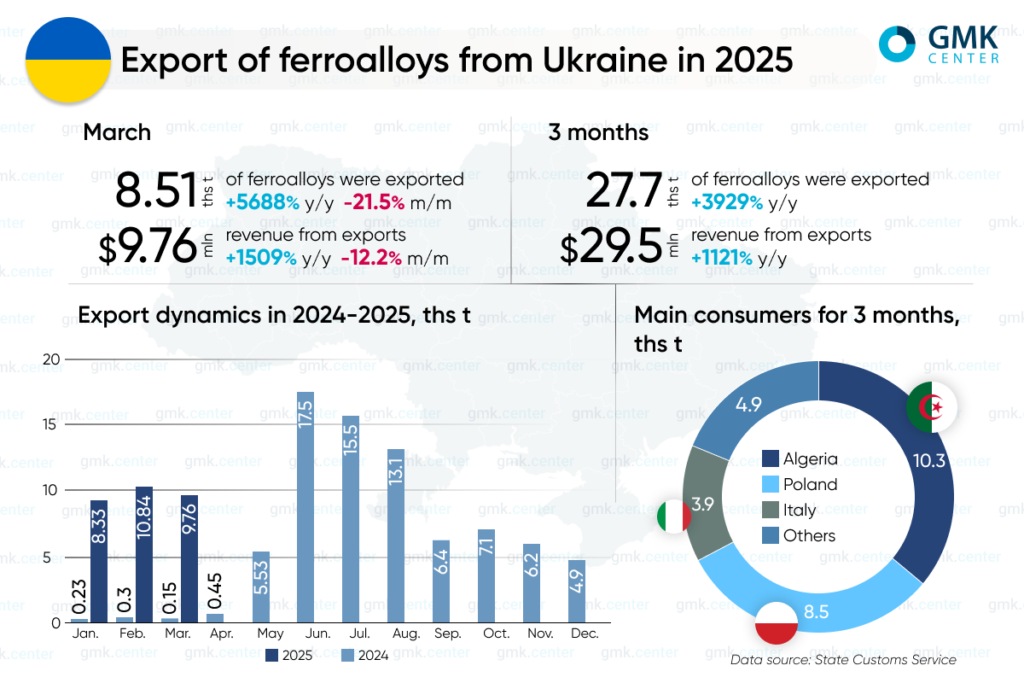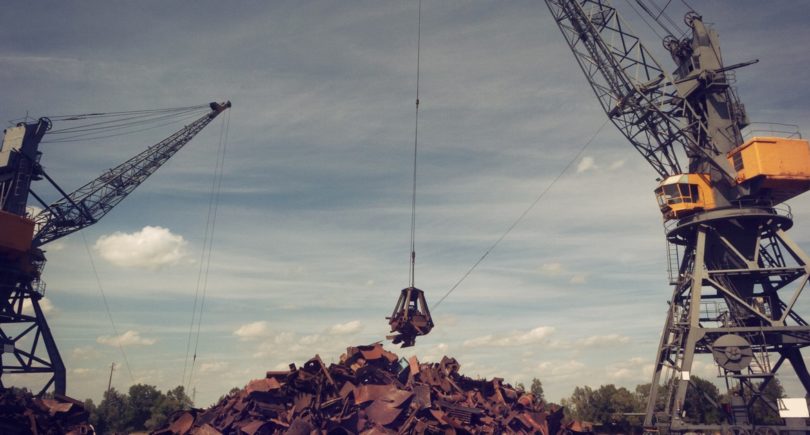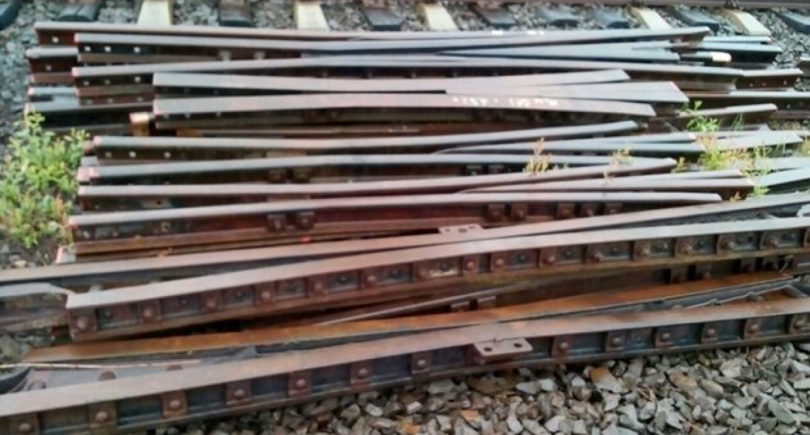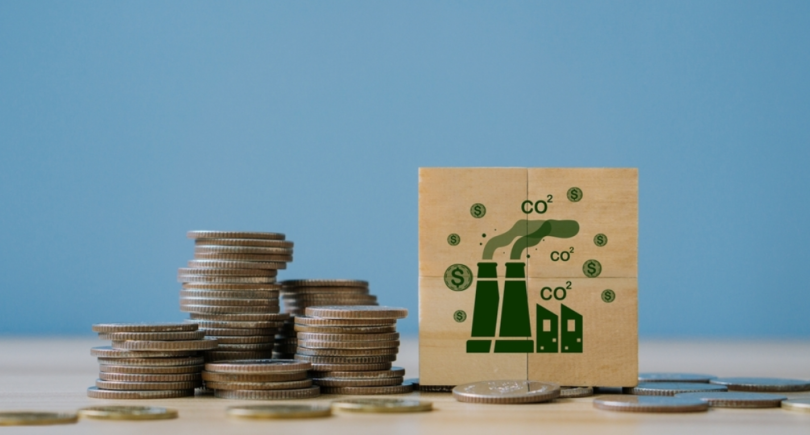
News Industry ferroalloys 1053 10 April 2025
Algeria, Poland and Italy account for the key supply volumes
In the first quarter of 2025, Ukrainian ferroalloy enterprises increased their exports by 52.2% compared to the previous quarter, to 27.68 thousand tons. At the same time, in January-March 2024, exports of ferroalloys were 0.7 kt, which is a result of the prolonged downtime of key enterprises from autumn 2023 to April-May 2024. This is evidenced by GMK Center’s calculations based on data from the State Customs Service.
The largest consumers of ferroalloy products during the period include: Algeria – 10.34 thousand tons, Poland – 8.5 thousand tons, and Italy – 3.93 thousand tons.
In March of this year, exports of ferroalloys from Ukraine decreased by 21.5% compared to the previous month to 8.51 thousand tons, while in March 2024, these volumes did not exceed 0.15 thousand tons. Algeria increased its imports of Ukrainian products by 44.3% month-on-month to 3.91 thousand tons, Poland – by 3.7 times month-on-month to 4.1 thousand tons, while no ferroalloys were supplied to Italy.

Export revenue in January-March 2025 increased to $29.54 million compared to $2.42 million a year earlier. In March, the figure decreased by 12.2% month-on-month to $9.76 million ($0.6 million in March 2024).
In 2024, Ukrainian ferroalloy plants reduced production by 49.4% y/y – to 108.2 thousand tons. The industry resumed operations in April-May after a forced shutdown in the fall of 2023.
Thus, exports of ferroalloys for the year decreased by 77.5% compared to 2023 – from 344.17 thousand tons to 77.32 thousand tons. In 2022, this figure was 349.56 thousand tons, and in 2021 – 668.54 thousand tons.
Last year, the key consumers of Ukrainian-made ferroalloy products were Poland – 20.94 thousand tons (189.34 thousand tons in 2023), Turkey – 45.69 thousand tons (45.69 thousand tons), and Italy – 16.96 thousand tons (18.74 thousand tons).
According to Sergiy Kudryavtsev, Executive Director of UkrFa Association, the key problem for the industry in 2025 is the high cost of electricity and the stability of its supply. Overall, the mood is largely negative with an element of uncertainty.




